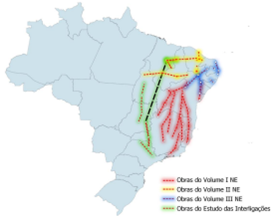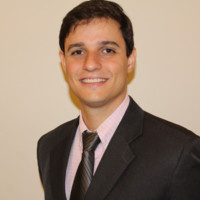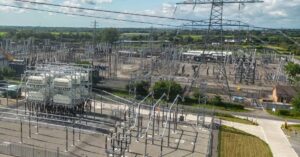

Accelerating renewables in Brazil using FACTS
June 13, 2023
Brazil’s transmission grid is undergoing huge change as it plans to add 3 to 5 GW of renewables each year over the next decade, at a time when transmission capacity is very limited in the region. In this article our Commercial Manager for Brazil, André Priolli, reflects on the uptake of FACTS in the country so far and shares insights from the recent CIGRE XIX ERIAC event hosted in Foz do Iguaçu.

Recently I attended XIX ERIAC with several of my colleagues to meet with industry stakeholders and present our technical papers to the conference audience. Throughout the week there was a strong sense of progress that is being made in the industry as people from Brazil and Latin America to as far as Spain and Portugal came together to share their technical expertise, learnings, and visions for the future of the grid. It was noted several times during the conference that there is an increasing volume of technical papers on real-world Flexible AC Transmission Systems (FACTS), not only related to Power Electronics committee and DC system (B4), but also in Power System Development and Economics committee (C1), relating the economic benefits of these innovative technologies for the current and future scenario of Power System, and their critical role in enabling the energy transition. Through my current and previous roles, I’ve been working to progress FACTS deployments in Latin America since 2018, so it was great to see this momentum.
Throughout the region of the RIAC (LatAm and Iberian countries), FACTS are in different stages of maturity and deployment, and that was notable during some presentations. I was able to follow a presentation by REE – Red Eléctrica de España (Spain Transmission System Operator), that showed a clear step by step planning process to evaluate alternatives to optimize the grid, which grid enhancing technologies and FACTS are first picks against traditional new infrastructure. Other countries, such as Colombia, presented similar use cases, in which FACTS were deployed in combination with new infrastructure providing immediate benefits to the short and long-term scenarios.
In Brazil, during 2010-2018 there was a wave of FACTS being used to enable interconnection of renewable energy in new and remote areas of the country, as well as grid stabilization. But it’s clear that we’re now at a turning point in the wide-scale use of these technologies, given the rapid growth in renewables connecting to the grid.
The rise of wind and solar generation in Brazil
Over the past decade, – Agência Nacional de Energia Elétrica (Brazilian national Electrical regulatory agency), the installed capacity in wind and solar in Brazil, rose from 2 GW in 2012 to 35 GW in May 2023[1]. In the first years, this growth was mainly led by regulated energy auctions, fostering new energy sources, and, more recently, by its competitive price, leading to several private PPA between large consumers and renewable developers in the free energy market. Up to 2032, according to EPE – Empresa de Pesquisa Energética (Energy Planning and Research Company), renewables expansion of 3 to 5 GW per year in Northeast of Brazil is expected, resulting in a total of 57 GW to 72 GW of renewable installed capacity in Northeast, turning the region in one of the main hubs of renewable energy in the world. However, to connect this new renewable generation to the grid and transport it to demand centres, a massive expansion in the transmission system is needed.

According to transmission planning studies concluded by EPE in 2022, over 15,000 km of new transmission lines and 16 new substations are planned for construction by 2028, represented in Figure [1] on the left. This means an expansion of 8% of the total length of transmission lines in the national interconnected system, and it’s primarily to connect new renewable generation. To build such incremental new infrastructure is a particular challenge and will take time to be in service. The risk of delay, however, can’t be neglected, due to complex construction, permitting processes as well as skilled workforce and companies needed for such projects, that are, at the moment, a scarce and competitive resource .
According to available data by ANEEL, in the Northeast alone, 9 GW of wind and solar projects are already under construction and another 75 GW have submitted their requests to access the grid until 2026 and are in the queue. Important to highlight that these this figure is equivalent of what EPE forecasted for the whole horizon up to 2032, in a optimistic scenario. This difference is mainly the result of a law from 2021 that stablished the end of discounts for interconnection tariffs – Tarifa de Uso do Sistema de Transmissão (TUST), for solar projects that requested access to the grid before March 2022. This law resulted, as said in the market, in a ‘Golden Rush’, which many developers anticipated their request for access to guarantee the interconnection tariff subsidy.
On the other hand, according to ONS – Operador Nacional do Sistema (Brazilian independent system operator) – capacity map, the remaining existing transmission capacity in the northeast of Brazil, between 2023 and 2026, is close to zero. To tackle this mismatch Brazilian authorities are considering a competitive process for transmission capacity margin, in order to prioritize the renewable projects in the queue, replacing the current ‘first in – first out’ rule of the queue. It is expected that this process alone will be able to significantly reduce the quantity of projects in the queue and remove non-mature projects from the Golden Rush, but still may not be sufficient to enable all the projects that renewables developers’ are bringing forward in Brazil.



The open question is: how to accommodate the connection of new renewable generation to the grid, if there is no transmission capacity until 2027?
In reality, the transmission grid as a whole is not operating that close to its limit. A small number of critical lines or network components will act as bottlenecks that limit the entire system capacity and slows renewable interconnection, even if spare capacity exists elsewhere on the network. FACTS devices that control power flows and/or provide grid stabilization services can remove these bottlenecks and add the required flexibility and support renewable integration. This “additional capacity” on the existing grid will close the gap between the long-term infrastructure and the immediate need for transmission capacity that renewable interconnections require in Northeast of Brazil.
By applying leading FACTS, such as our modular Static Synchronous Series Compensators (m-SSSCs)—SmartValve—power flows can be quickly redirected from overloaded nodes to ones with spare capacity, quickly unlocking transmission capacity, while increasing overall system security and resilience. SmartValve paves the way forward for series–connected FACTS (Flexible Alternating Current Transmission Systems) with a modular, transformerless approach and deployment flexibility to deliver greater solution value.
With its modular standardized design, the m-SSSC is distinct from legacy tailor-made FACTS devices and can be easily expanded or relocated in the future even at different voltage levels as the needs of the transmission system change over time, making it a ‘no regrets’ solution for system planning. The faster delivery and install timeframes, high reliability, capability to provide dynamic services, and its minimal impact on the local environment also contribute to the m-SSSCs to be implemented immediately and not wait until the long-term infrastructure is ready.
Accelerating renewable interconnection with m-SSSCs
We’re actively working with stakeholders in Brazil who are considering the use of distributed FACTS to resolve overloads and optimize grid operation, without the need to build new lines or reconductor existing lines, and to better utilize the existing infrastructure.
With renewable developers, we are studying alternative solutions to reduce curtailment of existing projects as well as evaluating creative ways to anticipate their connection to the system, given the mismatch between their PPA’s and transmission capacity margin.
Another example, a utility in São Paulo state, decided to look at alternative solutions to resolve increasing levels of congestion on a 138 kV line in normal (N) and contingency (N-1) conditions. The original option considered was to rebuild a section of the 138 kV circuit to increase its capacity, but this was estimated for completion in Q3 2026, resulting in thermal overloads that increase year-on-year while the line is under construction. Meanwhile, this would limit expansion of the distribution company in the region, limiting to a certain extent the regional development.
The analysis showed that using m-SSSCs to balance power flows would resolve the network need and deliver net economic benefits 15% higher than those of the new line and executed 2 years before the competing solution. The faster delivery and installation timeframes, flexibility to scale or relocate the devices, and avoided negative impact on the local environment (these devices are compact and can fit within the existing substations) also contributed to the m-SSSCs being the preferred option.
Future growth of FACTs in Brazil and further afield
During XIX ERIAC closing ceremony, technical committees C1 and B4 highlighted the wide use of FACTS, specially SSSC technology, for optimizing power systems resources. Following strong growth in multiple markets across Central and South America, including in Brazil and Colombia, Smart Wires officially opened an office in Medellin last year to act as our operational hub and support growing demand in the region. FACTS offer huge potential to support the energy transition in Central and South America, and I look forward to continuing to collaborate with stakeholders to advance the use of innovative technology in the future.
Contributing expert
André is Commercial Manager South America for Smart Wires, leading the development of existing and new markets for the company. In cooperation with the customers, he and his team are looking for new opportunities to optimize the existing transmission grids with the application of modular FACTS, evaluating the business case for each individual project, together with customer team and expertise of the system.
Before joining Smart Wires, André worked for 10 years in the transmission industry, as sales manager for FACTS in LATAM.
For press related purposes, please contact us at marketing@smartwires.com.
Dive deeper into related content
Explore our products and services
Talk to our experts


